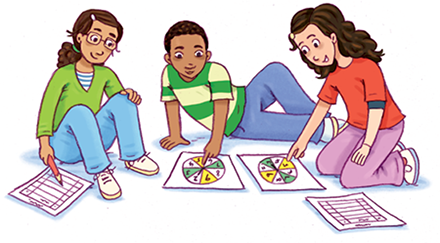Yellow
Green
Blue
Red
Magenta
Remove

Discuss the following questions with your group. Use the data from your graph and Nisha's graph to answer the questions.
- What was your most common sum? Tell how you know.
- What is your least common sum? Tell how you know.
- Where are the tallest bars on your graph? What does it mean when the bars are tall?
- Where are the shortest bars on your graph? What does it mean when the bars are short?
- The graph Nisha, Darius, and Carla made has taller bars in the middle. How does your graph compare?
- Compare your graph to the other graphs in the class. How are they the same? How are they different?
- Are the most common sums in the same place on all the graphs? What about the least common sums?

As a class, make a chart with all of the possible spins and sums.
- In what way are your graph and the class chart alike and different?
Check-In: Questions 12–13

- What would happen if you spun and added 40 more number sentences to your graph? How would it change? How would it look similar? Explain your predictions.
- Look back at the number sentence chart your class made for the sums 4 through 18. Explain why there are 7 possible number sentences for the sum of 12.












